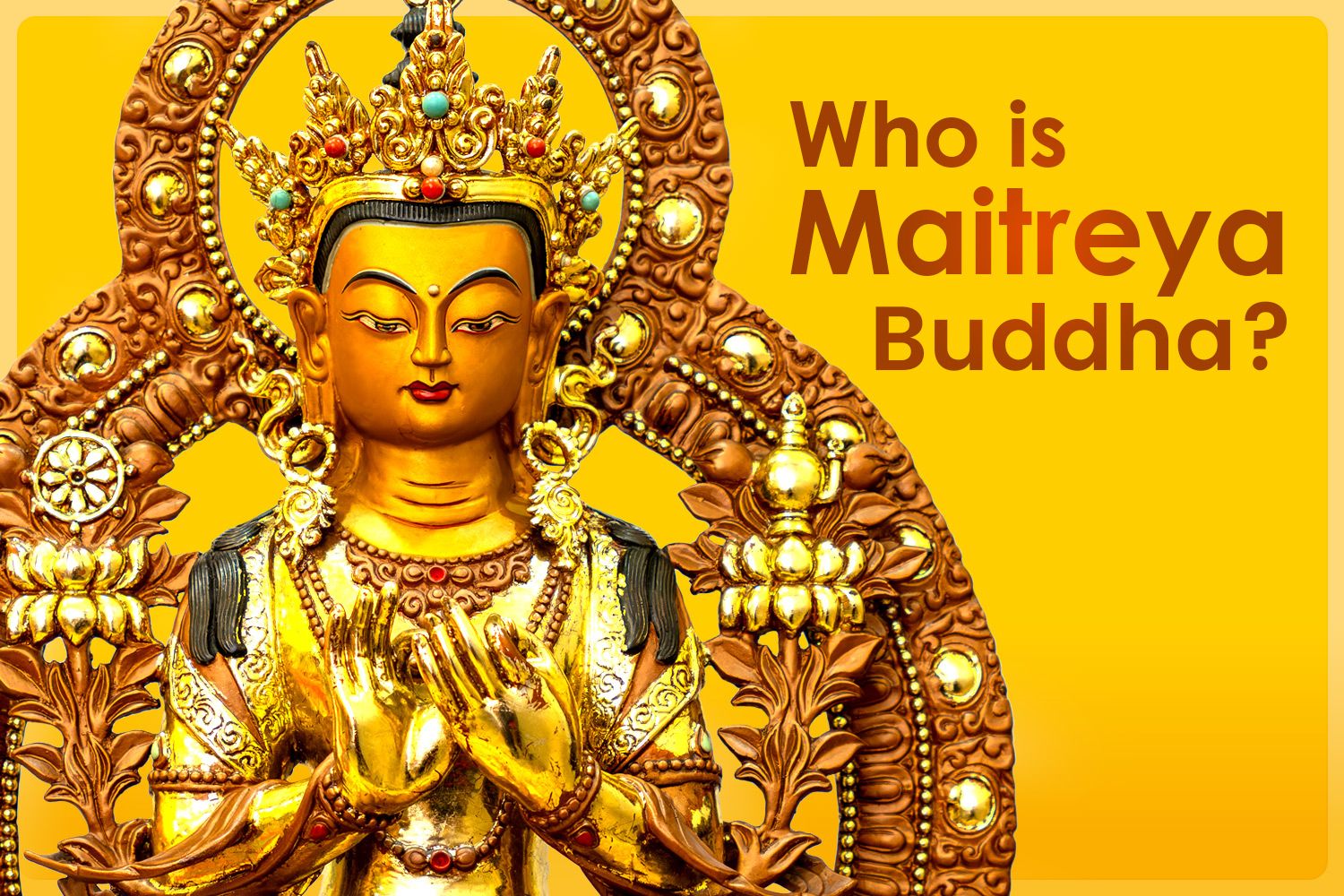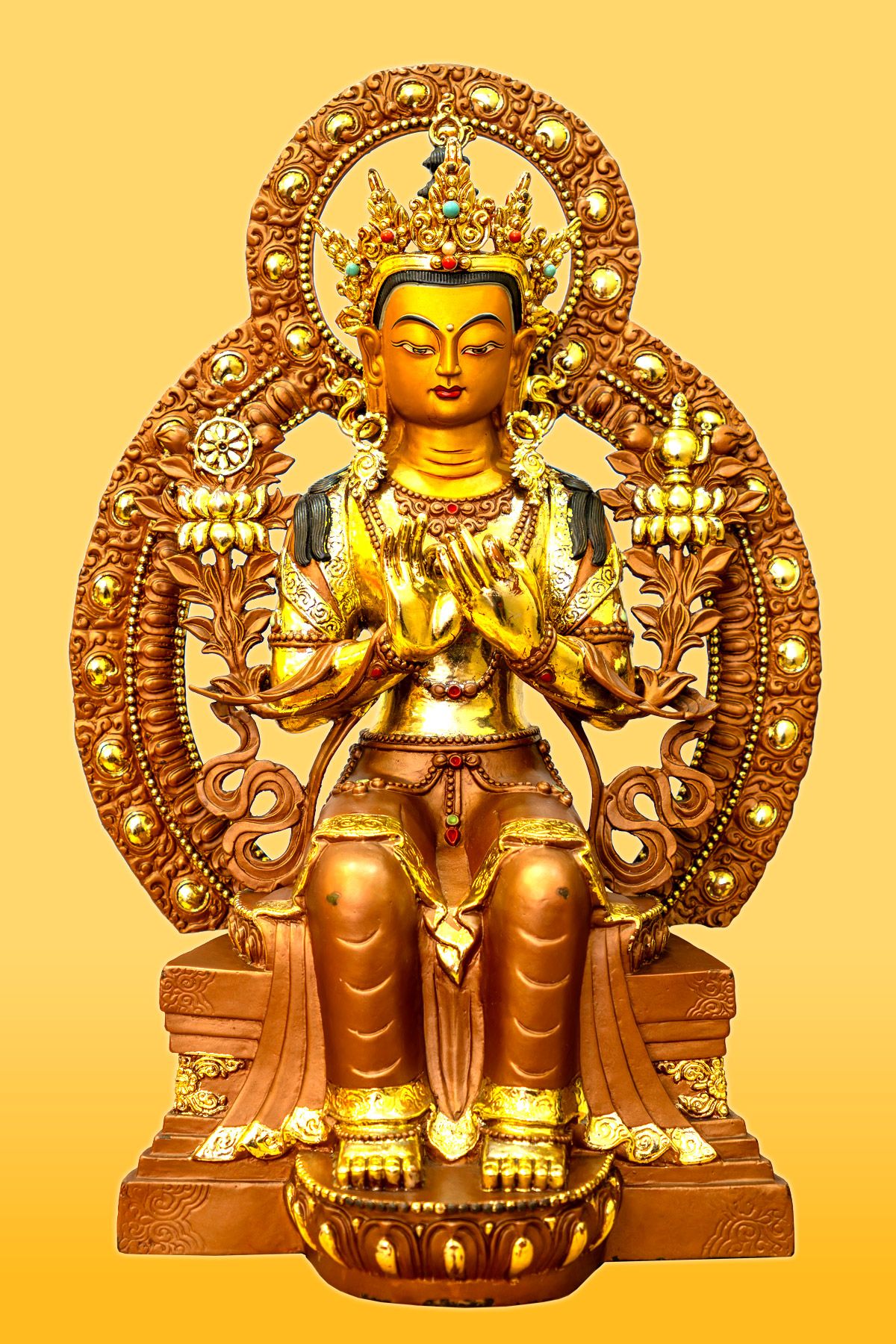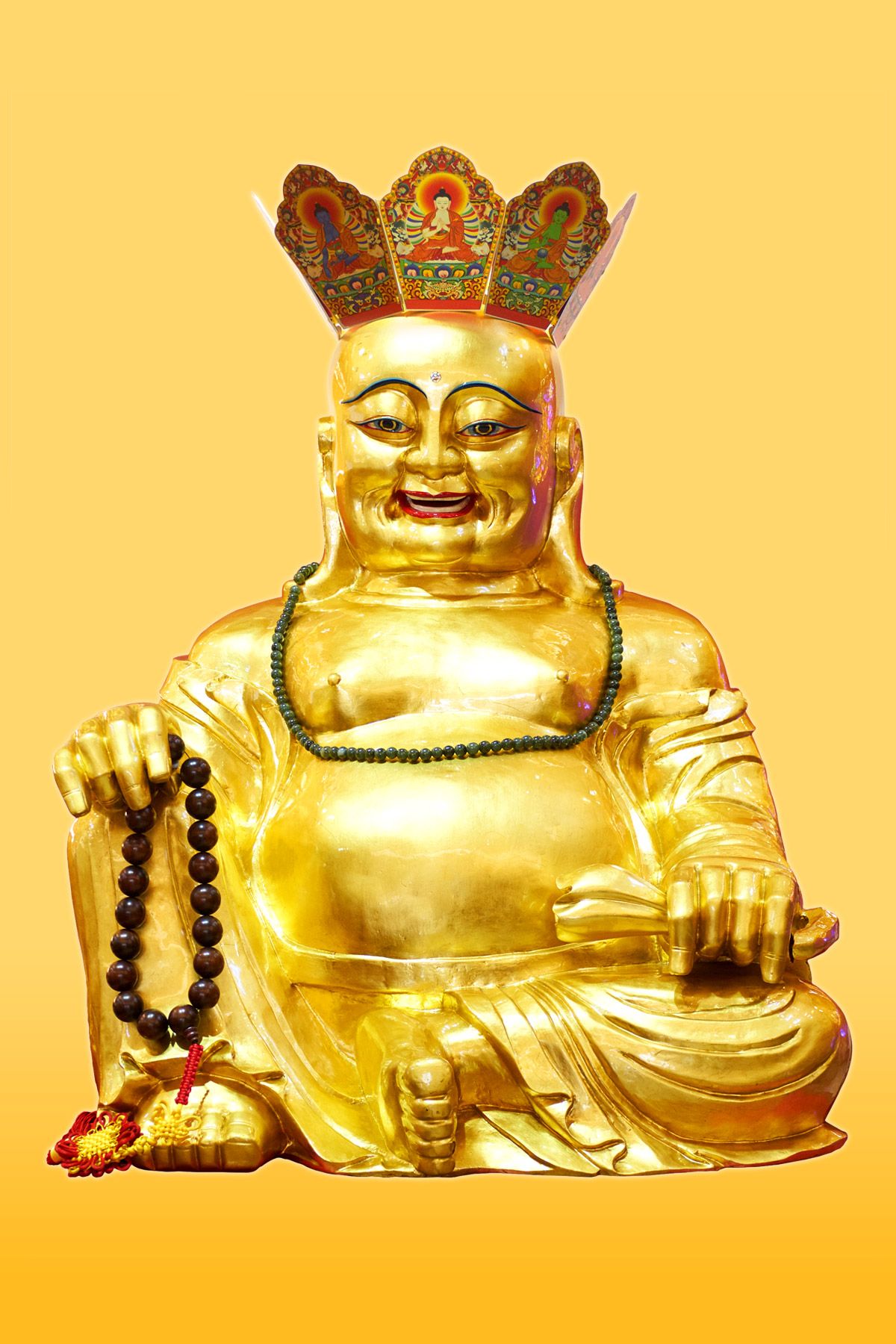Who is Maitreya Buddha?

Countless eons ago, after making numerous offerings, Maitreya received the Bodhisattva vows from the Tathagata Great Power in the presence of many other Buddhas.
From that moment onward, he has guided countless beings toward enlightenment, leading them along the path of the three higher trainings—discipline, concentration, and wisdom—through the three vehicles: Shravakayana, Pratyekabuddhayana, and Mahayana.
During his time as a Bodhisattva, Maitreya focused on the meditation of great love. Not only did he teach others this practice, but he also engaged in it deeply himself. He would often sit at the gates of cities, meditating on loving-kindness. His meditation was so profound that anyone who came close enough to touch his feet would immediately experience the realization of great love. This deeply pleased the tathagatas of all directions, who rejoiced in his actions and prophesied that in all his future lifetimes as a Bodhisattva and a Buddha, he would be known as "Loving-Kindness" (Sanskrit: Maitreya), which is how he received his name.
In one of his lifetimes, Maitreya was born as one of a thousand sons to a great king. The king, wishing to know the order in which his sons would attain enlightenment, placed all their names in a bowl, meditated for seven days, and drew the names one by one. Maitreya’s name was drawn fifth, and the Buddha of that era, Tathagata Limitless Knowledge, predicted that Maitreya would be the fifth Buddha of this age, with Shakyamuni being the fourth.

Maitreya Depicted in Tibetan Buddhism, enshrined at Thekchen Choling Singapore
Maitreya eventually advanced through all stages of spiritual development, reaching the tenth and highest level of a Bodhisattva, and ultimately attained full enlightenment as a Buddha. Having achieved perfect enlightenment, he manifests in various forms across countless Buddha fields. Currently, his pure land is in Tushita, where he teaches Mahayana teachings to countless advanced Bodhisattvas. It was here that he taught his five renowned texts to the great Arya Asanga. Maitreya also offers numerous other teachings tailored to the needs of his disciples, appearing as spiritual masters across the ten directions to guide beings toward full awakening.
Eventually, the time will come for Maitreya to manifest as the fifth universal Buddha of this world age and teach the Dharma for the benefit of all beings.
There are many Mahayana Sutras which describe and discuss Maitreya. He appears in several important Mahayana Sutras such as the Lotus Sutra, Vimalakirti Sutra, the King of Samadhis Sutra, and the Perfection of Wisdom in Eight Thousand Lines.
Maitreya Buddha in Tibetan Buddhism is often depicted as a seated Buddha with a crown on his head. His hands are in a Teaching Mudra position. On his left is a water vase, to symbolise Maitreya's identity as a Brahmin when he descends to our world. On his right is a Dharma Wheel, which shows that Maitreya will preach the Buddhadharma.
Maitreya Depicted in Chinese Culture
Maitreya is often depicted in China and many East Asian cultures as a monk holding a cloth sack. Monk Budai is believed to be the manifestation of Maitreya Buddha in China.
According to legend, Budai was a monk from Zhejiang province, living during the 10th century, who was known for his carefree nature and his role as a wandering Chan Buddhist monk at Yuelin temple. His manifested parinirvana in the early 10th century, and his passing was marked by a revealing poem in which he proclaimed himself to be Maitreya, the Buddha of the future, who would one day bring salvation to countless beings.
Maitreya Buddha in Chinese culture is depicted as a joyful chubby monk holding a cloth sack. His depiction as Maitreya reinforced his status as a figure of compassion and benevolence, embodying the qualities of happiness, prosperity, and protection for all beings, especially the vulnerable and the poor. This sack, filled with his few possessions, became a symbol of his ability to bestow joy and blessings upon others, particularly children. This imagery of the "Laughing Buddha" has become a popular motif in Chinese culture, symbolizing good luck, abundance, and the simple joys of life. Overall, Maitreya Buddha symbolises generosity and bringing happiness to all beings, as according to Buddhist teachings.
Thekchen Choling Singapore’s Maitreya
An antique wooden Maitreya rupa – estimated to be about 200 years old – was offered by a devotee to Singha Rinpoche, and subsequently refurbished in gold.
This rupa was created in the style of Budai, a monk who lived in 10th century Imperial China and venerated by many as an emanation of Maitreya.

Maitreya Depicted in Chinese Culture, enshrined at Thekchen Choling Singapore
Conclusion
Maitreya Buddha will be the next Buddha to spread the dharma on Earth during the degenerate age when Shakyamuni Buddha’s teachings have completely disappeared. Maitreya Buddha is important and central to the continuation of Buddhadharma. Come visit Thekchen Choling Singapore to marvel at our Maitreya Rupa and other spiritual treasures!
“Everyone can make a connection with Maitreya Buddha, so that even if one does not become enlightened during this lifetime, when Maitreya Buddha teaches one is able to become Maitreya Buddha’s disciple and to become enlightened at that time.”
- Lama Zopa Rinpoche

